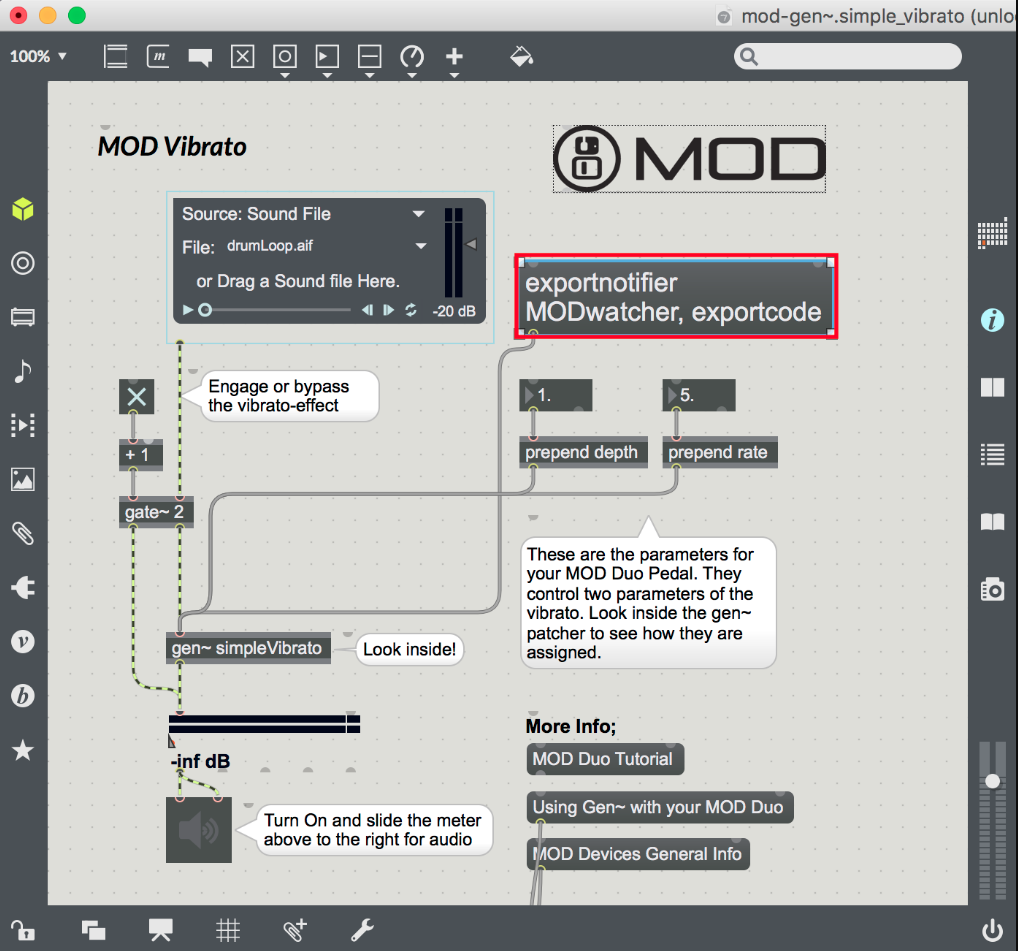If your computer and a stompbox had a love child, MOD Duo would be it – a virtual effects environment that can load anything. And now, it does Max/MSP, too.
MOD Devices’ MOD Duo began its life as a Kickstarter campaign. The idea – turn computer software into a robust piece of hardware – wasn’t itself so new. Past dedicated audio computer efforts have come and gone. But it is genuinely possible in this industry to succeed where others have failed, by getting your timing right, and executing better. And the MOD Duo is starting to look like it does just that.
What the MOD Duo gives you is essentially a virtualized pedalboard where you can add effects at will. Set up the effects you want on your computer screen (in a Web browser), and even add new ones by shopping for sounds in a store. But then, get the reliability and physical form factor of hardware, by uploading them to the MOD Duo hardware. You can add additional footswitches and pedals if you want additional control.
Watch how that works:
For end users, it can stop there. But DIYers can go deeper with this as an open box. Under the hood, it’s running LV2 plug-ins, an open, Linux-centered plug-in format. If you’re a developer, you can create your own effects. If you like tinkering with hardware, you can build your own controllers, using an Arduino shield they made especially for the job.
And then, this week, the folks at Cycling ’74 take us on a special tour of integration with Max/MSP. It represents something many software patchers have dreamed of for a long time. In short, you can “export” your patches to the hardware, and run them standalone without your computer.
This says a lot about the future, beyond just the MOD Duo. The technology that allows Max/MSP to support the MOD Duo is gen~ code, a more platform-agnostic, portable core inside Max. This hints at a future when Max runs in all sorts of places – not just mobile, but other hardware, too. And that future was of interest both to Cycling ’74 and the CEO of Ableton, as revealed in our interview with the two of them.
Even broader than that, though, this could be a way of looking at what electronic music looks like after the computer. A lot of people assume that ditching laptops means going backwards. And sure enough, there has been a renewed interest in instruments and interfaces that recall tech from the 70s and 80s. That’s great, but – it doesn’t have to stop there.
The truth is, form factors and physical interactions that worked well on dedicated hardware may start to have more of the openness, flexibility, intelligence, and broad sonic canvas that computers did. It means, basically, it’s not that you’re ditching your computer for a modular, a stompbox, or a keyboard. It’s that those things start to act more like your computer.
Anyway, why wait for that to happen? Here’s one way it can happen now.

Darwin Grosse has a great walk-through of the MOD Duo and how it works, followed by how to get started with
The MOD Duo Ecosystem (an introduction to the MOD Duo)
Content You Need: The MOD Duo Package (into how to work with Max)
An alternative: the very affordable OWL Pedal is similar in function, minus that slick browser interface. It can load Max gen~ code, too:
New Tutorials including Max MSP on the OWL!
Pd users, that works, too – via Heavy (I think on the MOD, as well):
OWL & Heavy – a Pd patch on the OWL